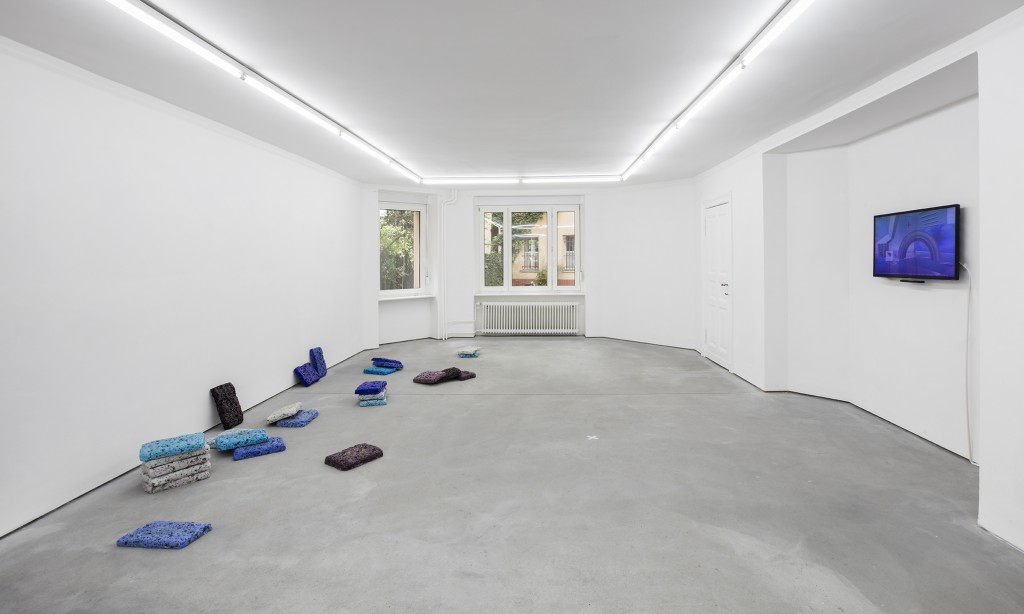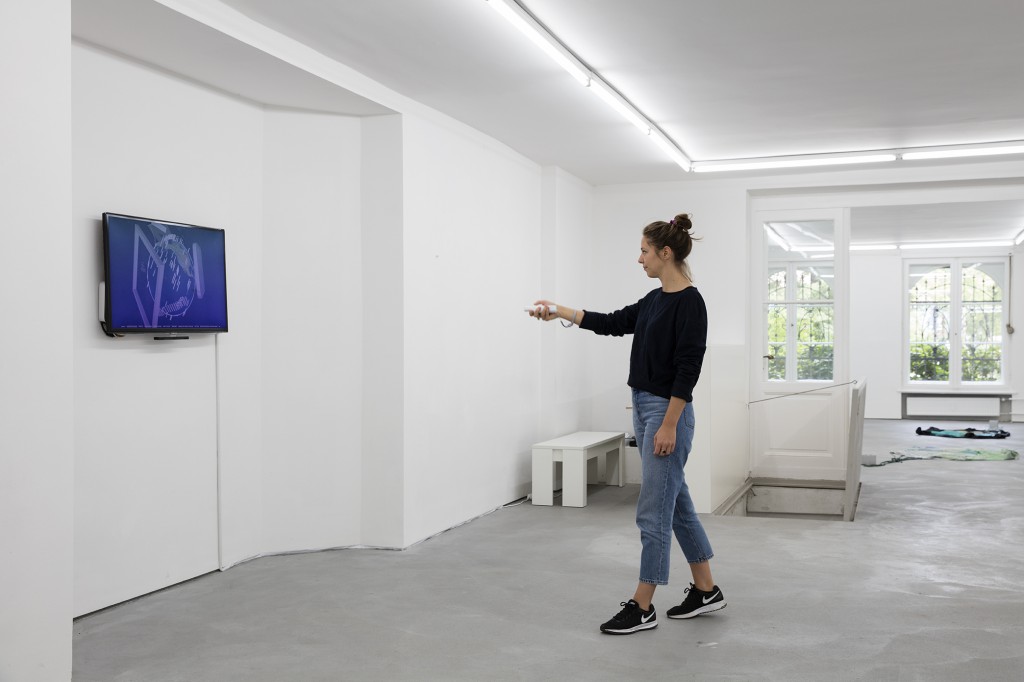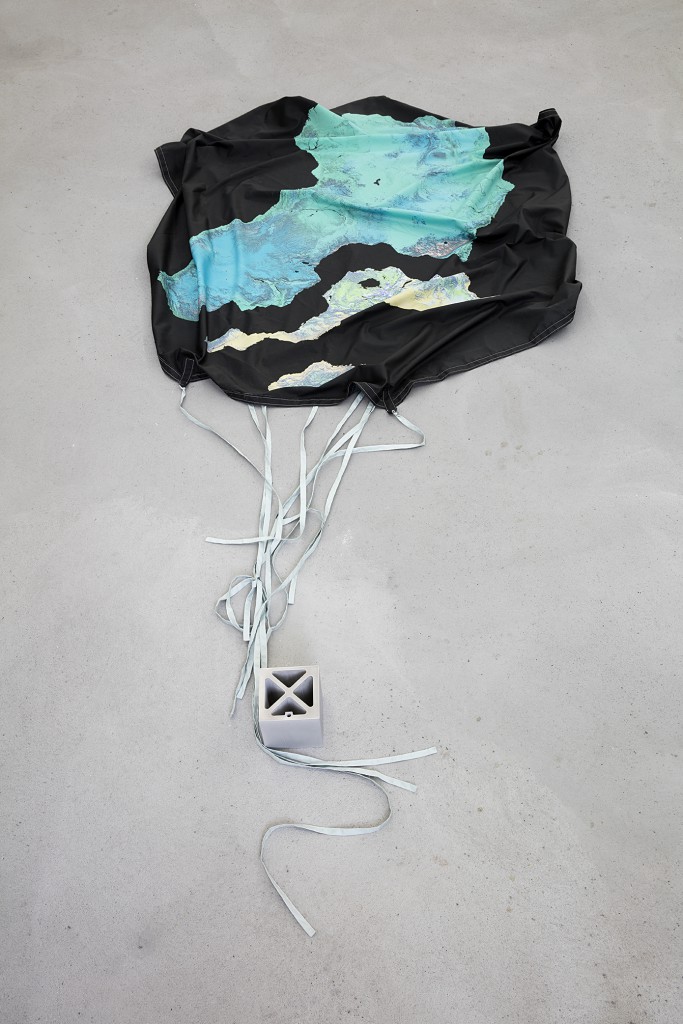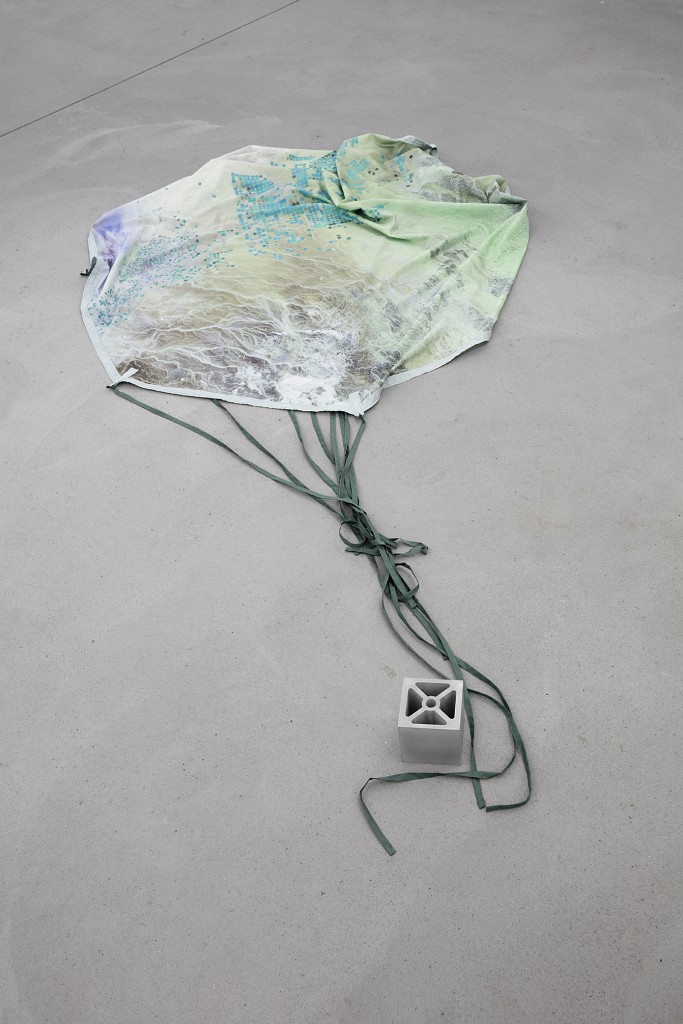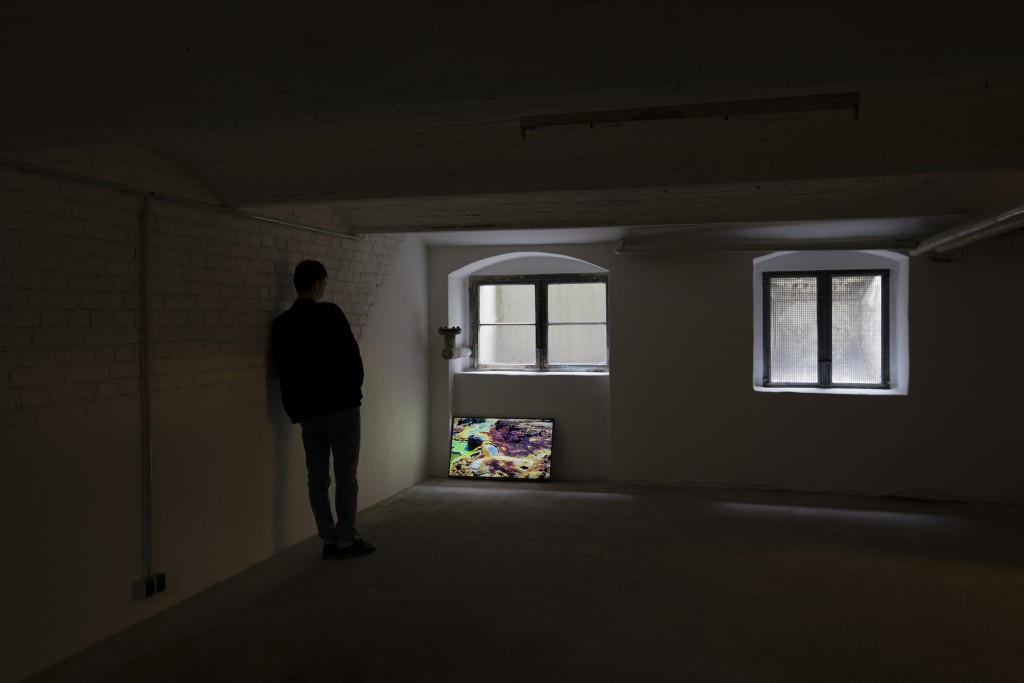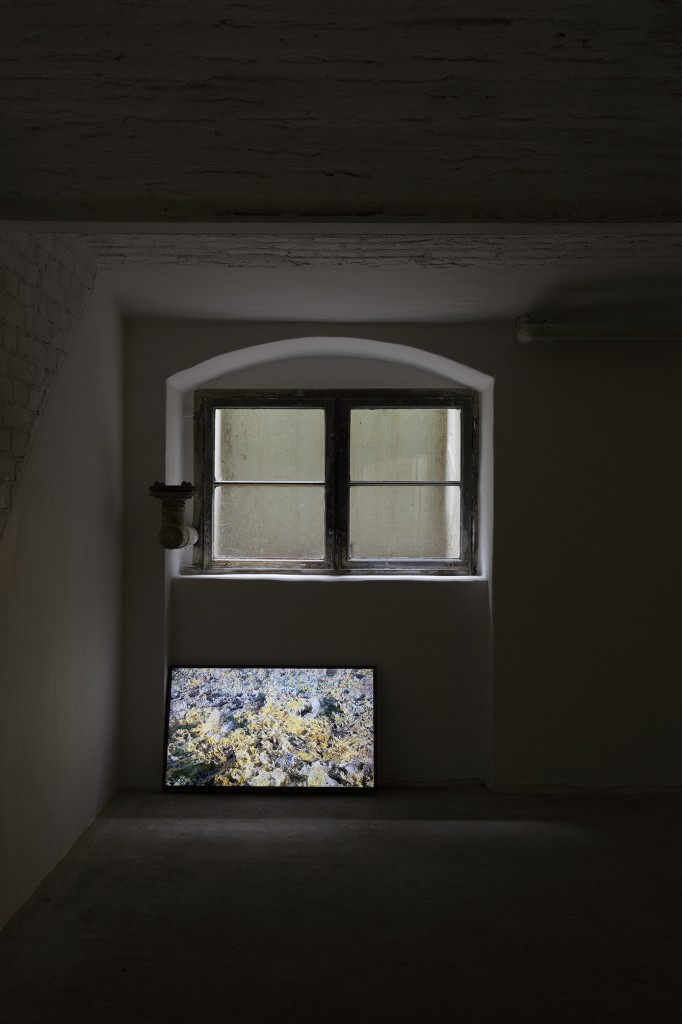Femke Herregraven – Captive Portals
Future Gallery, Berlin
23 June – 29 July 2017
Terabytes pushing terrabites
Spectral signatures in ultraviolet ink
Airdrops in algorithmic skies
The birth of a new ocean
A solidified wave on one camel
Where do I place myself in all of this?
In the infinite space between image a and b.
In an economy of sci-fi capital and speculative exits some places are projected as zones of relief while others as zones of hostility. While data servers and calculation hubs migrate to cold regions in the north or beyond the atmosphere, less mobile life is confined within the blazing heat of inhospitable terrain. When a landscape gets dubbed as the hottest and cruelest place on Earth, our lazy air-conditioned desire for new frontiers is instantly fulfilled. Extreme soil, extreme heat, extreme life, extreme survival distilled into .jpgs of manageable risks. A cube satellite frames a splash of geothermal energy ahead of time. Timestamp. But the rains failed anyway.
‘Captive Portals’ presents an ongoing investigation into the relation between financial value, self-organizing systems, and geological instability. A new series of works explore the orbits of different actors that cross a geological depression in East Africa. Cyclical movements of a shield volcano, a telescope lens, a salt desert, extremophiles, salt trading caravans, and a swarm of CubeSats inspired a spatial model from which out-of-place artifacts are created by using silicic ceramics, color correction, salt printing, and remote sensing. In addition, ‘Sprawling Swamps’ (2016-ongoing) sketches a series of scenarios located on swamps, waves, ice, and shifting shorelines that simultaneously question new forms of value as well as the binary presumption of land and water which become ineffective on these unstable terrains. Uncertain matter creates uncertain value. When territories melt, erode or sink it becomes unclear what is to be governed. Exhaustion, regression, rumors, and empathy as new forms of value. Preserve or empty cache.
Mining sediment and sentiment,
a splitting continent offshores its own future,
What deserves to be framed and what not?
You cannot control what you cannot measure
Debt orbiting as an infinite shoebox satellite
A rain of payload ashes
What sense of place is imagined in a satellite picture commissioned by a hedge fund?
Prediction and deep time as allegoric props of the present
Blinding heat
A geologic depression sets the stage



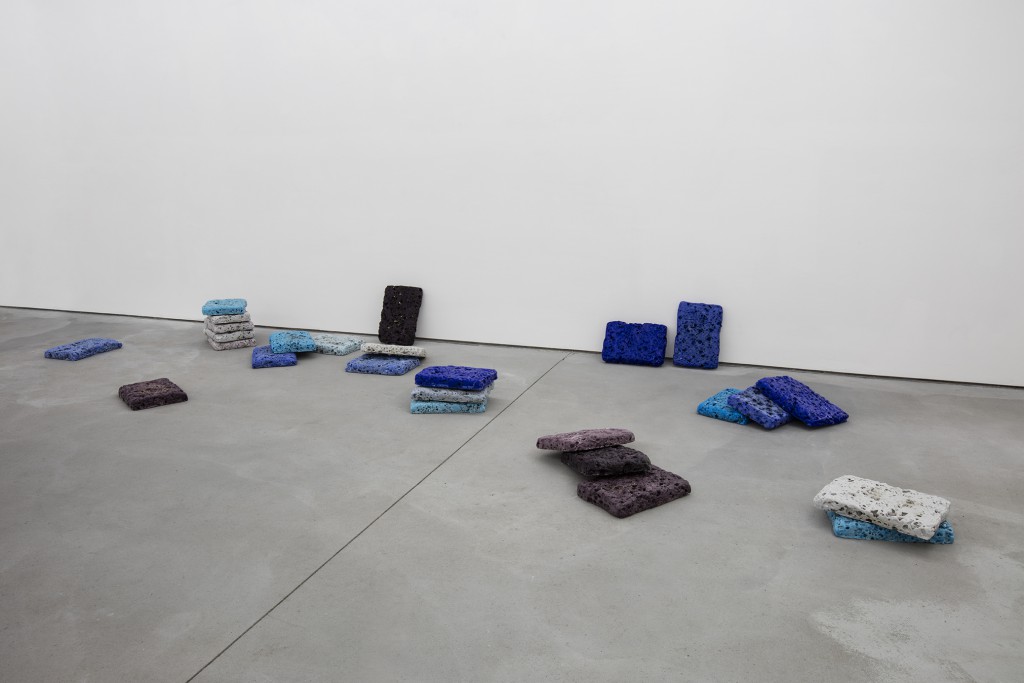
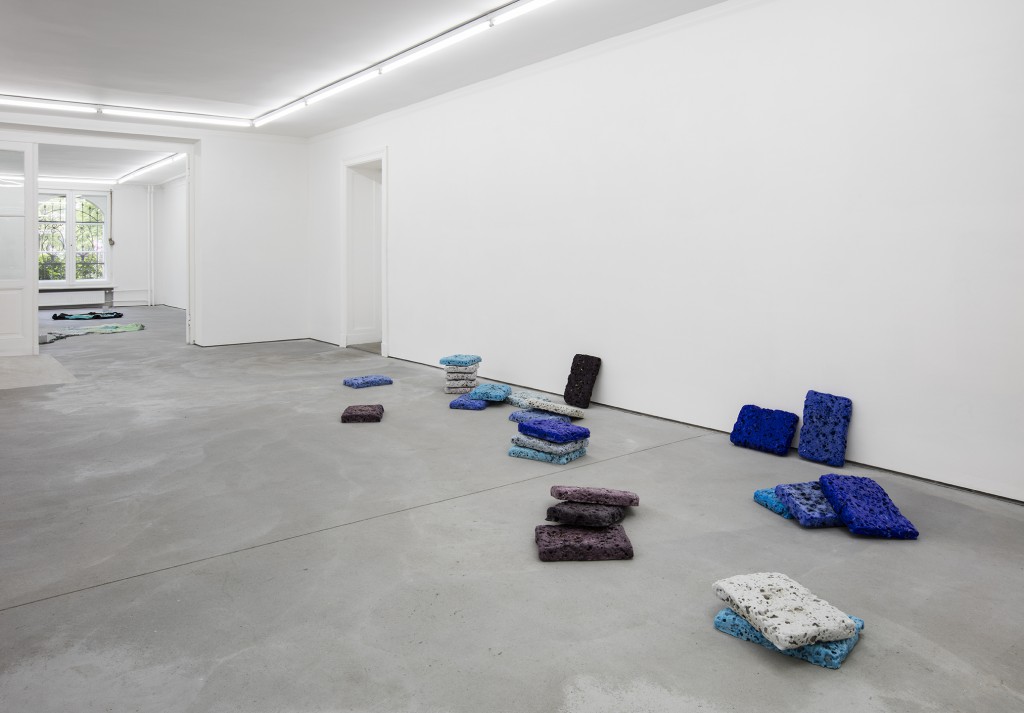
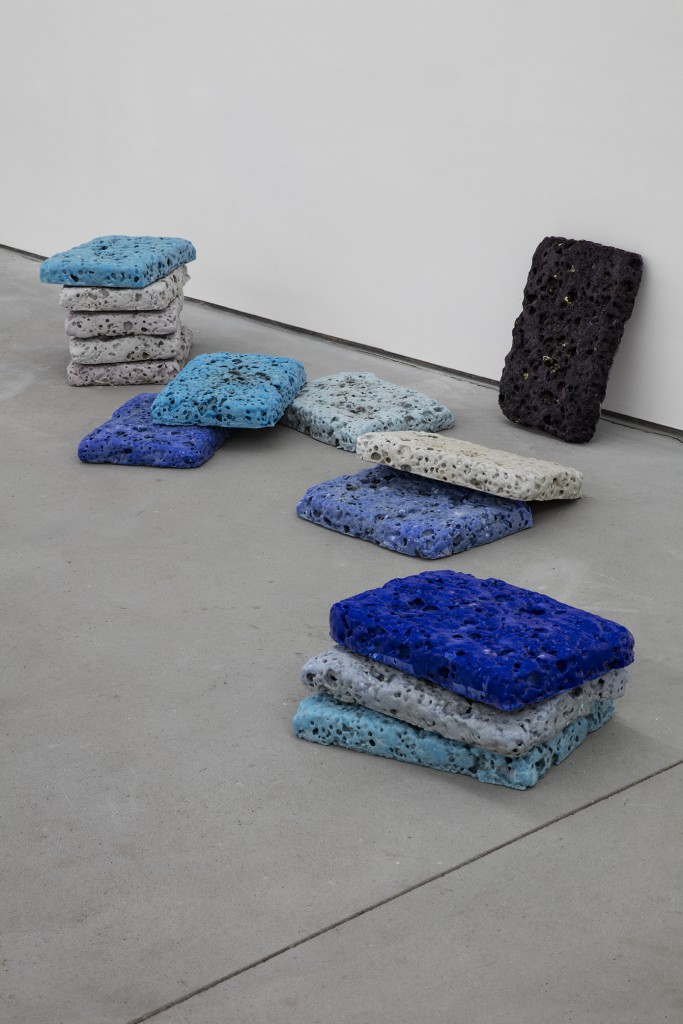
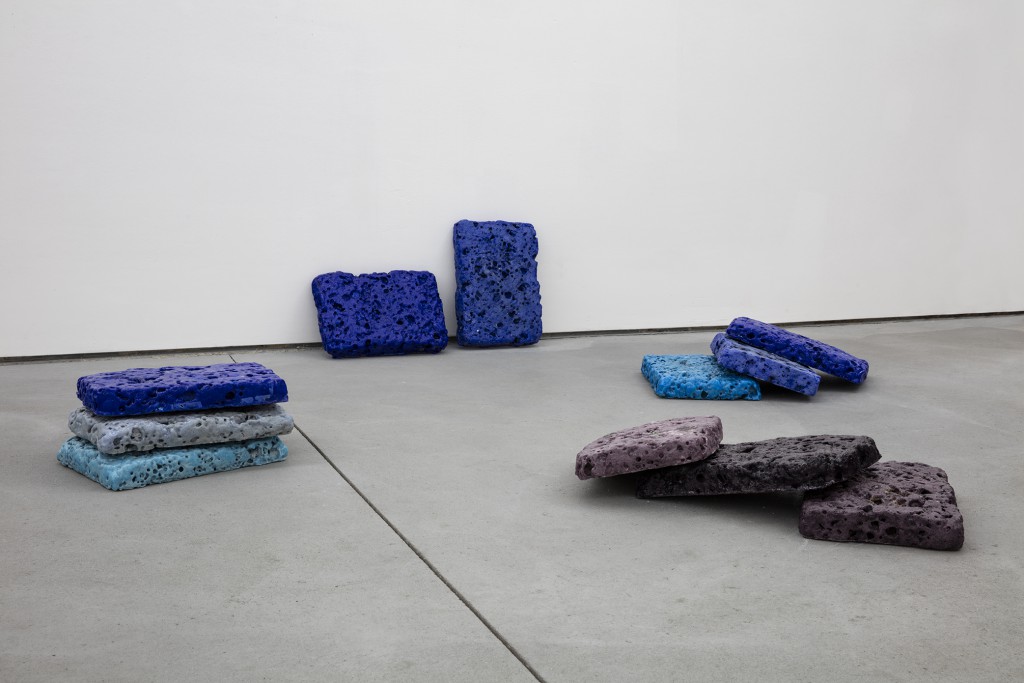
One Wave, one camel – 548km (2017) – 26 slabs, quarz, silversand, salt, calcium carbonate, copper dioxcite, cobalt dioxite, manganese dioxide, 27 x 35 x 5 cm
One Wave, one camel – 548km consists of 26 slabs of silisic ceramics, the oldest known ‘made made synthetic’ developed more than 6,000 years ago in Egypt, and elsewhere in the ancient world. The volume is a reference to a non-human unit of salt which has been carried out by camels from a salt desert in the Danakil in East Africa for more than thousand of years. The further away the salt is carried away from its source, the more its value increases. Along the way this non-human unit falls apart into smaller pieces and is distributed into different channels of local communities as a form of currency. Just as the volume of salt slab carried by one camel operates and circulates within its own local value system, the 26 reincarnated slabs in the first manmade synthetic get split up and circulate within its own value system inside the spaces and institutions of art.
Sprawling Swamps (2016 – ongoing) – digital interactive 3d environment, video, audio

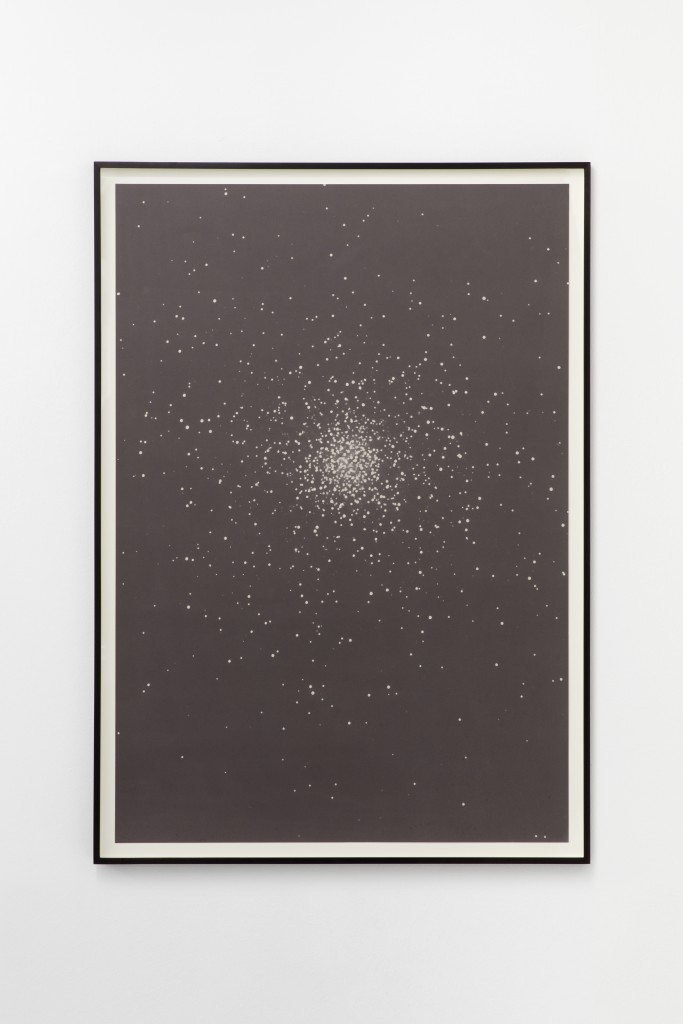

Seismic Parallax (2017) – 2 salt prints, silver nitrate, Danakil collected salt on Hanemuhle Platinum Rag, 100 x 70 cm each
Seismic Parallax is a diptych of salt prints reflecting on the collision of two optical orbits in the same geographical area. The first image shows the Whirlpool Galaxy–also known as M51–at 30 million light years away. It was taken as one of the first images of the recently opened Ethiopian space observatory. As a telescopic image operated from the ground it speaks of the technologically advanced human vision and its timeless motive of staring into the the sky. The second image depicts a volcanic eruption in the Danakil Depression in Northern Ethiopia, which is considered the hottest place on earth in terms of year long average temperatures and likewise one of the lowest lying areas on the planet. With three tectonic plates meeting in the Danakil Depression it is marked by volcanic activity and geological instability. Its landscape is defined by salt lakes and hot springs, with extreme microorganisms, that are of major interest for astrobiologists. The image was captured from outer space after artificial intelligence software operated by a swarm of satellites detected changes in the underground lava lake. The satellite swarm predicted and captured the volcanic eruption in an early stage even before the scientists did. Both digital images are reproduced with salt collected in the salt desert surrounding the volcano in the Danakil Depression. As a diptych they confront a view from above with a view from below, both mediated through advanced technologies. Realised with a material indigenous to the Danakil Depression, the digital images consisting of abstract sets of data find their way back into concrete materiality. It is a procedure that raises questions of how to represent or approach a landscape, how to measure the world in scientific terms, how to make use of specific resources and how to relate to outer space–to that which goes beyond and still forms part of the world’s broader ecosystem.

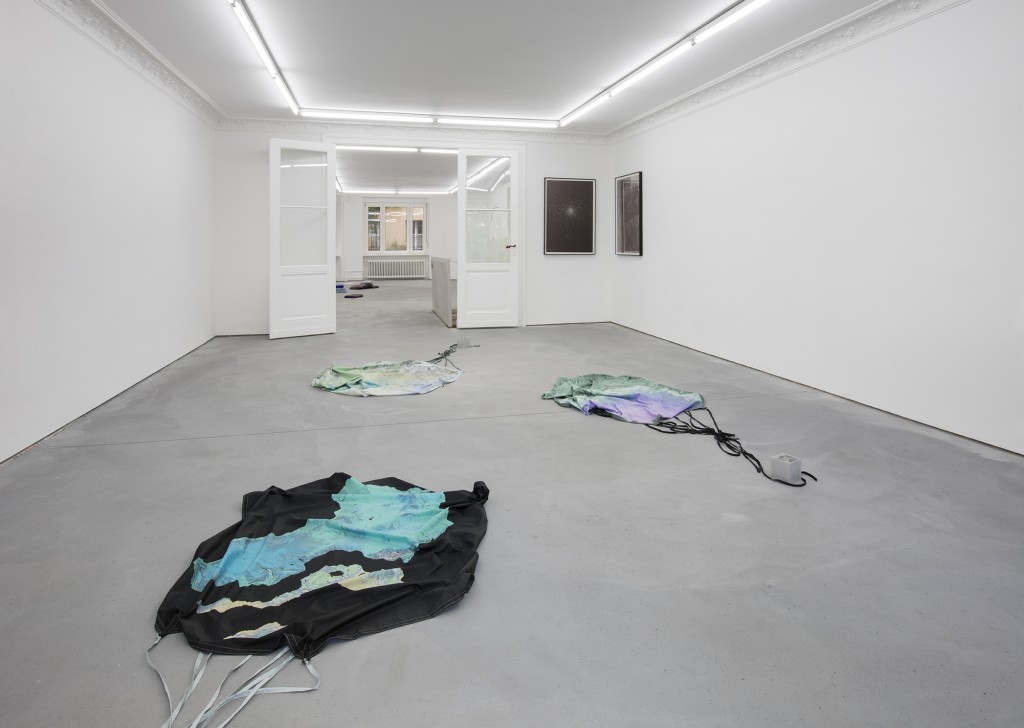

Rain of Payload Ashes (2017) – waterjet cut aluminium and taft silk, aluminium block 10 x 10 x 10 cm, parachute: dimensions variable
Rain of Payload Ashes is a series of speculative artefacts reflecting on the vertical orbiting gaze of cube satellites which are used by financial markets for generating alpha – information advantage – in stock trading. Via infrared technology cubesats capture the spectral signatures of reflected or emitted energy from or underneath the Earth surface which after algoritmic analysis can be identified as gold, melting snow, infected crops, oil reservoires from outer space. By remote sensing chemical are transformed into financial data. A swarm of light weight cube satellites descends back on Earth after false color satellite images have put financial derivatives in motion.
